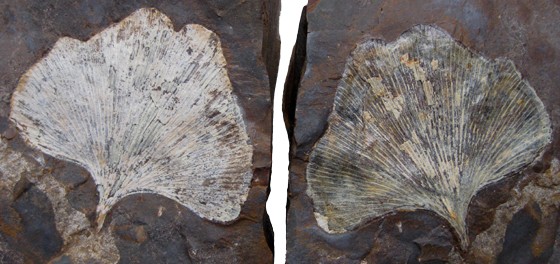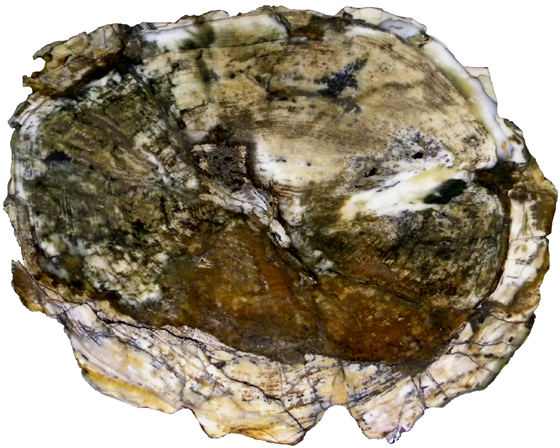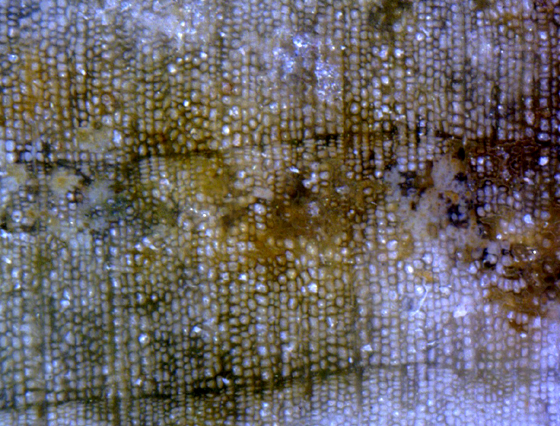
 |
 |
Science
Olympiad
| Division (Phylum) Ginkgophyta |
| The
Maidenhair tree or Ginkgo biloba is the only living
species representing Ginkgophyta. Representatives
of the order Ginkgoales date back to the Permian, but the
genus Ginkgo makes its first appearance in the
Jurassic. In fact, Ginkgophytes reached
their greatest diversity during the Jurassic. Fossil evidence
indicates that at least 16
genera of ginkgophytes made up a significant part of the
Mesozoic vegetation (Willis & McElwain, 2002, p. 139). Ginkgos
declined in the Paleogene and Neogene, becoming nearly extinct
(Tidwell, 1998, p. 102). From Ancient Diversity to a Single Species Ginkgo
biloba is often referred to as a "living fossil". Ginkgo leaves
are common fossils in Jurassic and Cretaceous sediments
of the Northern Hemisphere. The Ginkgo family (Ginkgoaceae)
was thought to be extinct in the wild. In 1956 a small population
of Ginkgo biloba was discovered in southeast China.
The Ginkgo tree has been cultivated in the sacred
gardens of China for centuries. Ginkgo has been
planted worldwide and is valued for its beauty and medicinal
properties (Kenrick
& Davis, 2004, p. 148). Although Ginkgo biloba is
referred to as a "living fossil", the fossil
leaves of Ginkgo species show great variation in
leaf morphology (Willis &
McElwain, 2002,
p. 139). The fossil wood and reproductive structures are
rare as fossils. Ginkgo wood is prone to early decay. In
general, Ginkgo leaves are fan-shaped and may be
deeply lobed (notched) to unlobed (entire). The veins appear
to be parallel, but actually exhibit open dichotomous venation
(each vein divides).
Ginkgo biloba is a deciduous tree. The large numbers
of Ginkgo leaves
in the fossil record suggests that the ancestors of Ginkgo
biloba were also deciduous. The
diversification of Ginkgophytes during the Mesozoic
helps to mark a significant change in the world's flora.
Paleozoic flora was dominated by ferns and
clubmosses (Paleophytic flora). The Paleophytic flora
gave way to a Mesophytic flora during the Triassic
period. Woody seed-bearing plants and their relatives
dominated Mesophytic flora. Thus, the change from Paleophytic
to Mesophytic represented a change in reproductive
strategy; from spore producers to seed producers. Conifers,
cycads, and ginkgos diversified during this time and
dominated the landscape (Kenrick & Davis,
2004, p. 143). |
 Ginkgo adiantoides Paleocene Sentinel Butte Formation Morton Co., North Dakota |
 Ginkgo beckii Miocene Wanapum Basalt Formation Yakima Ridge Yakima Co, WA |
 Ginkgo beckii Micrograph showing tracheids in growth ring (transverse plane) Image taken of specimen above at 200x |
Bibliography |
Kenrick, P. and Davis, P. (2004). Fossil Plants. Smithsonian Books: Washington. Taylor,
T.N., Taylor E.L. & Krings, M. (2009). Paleobotany:
The Biology and Evolution of Fossil Plants [2nd
Ed]. New York: Academic Press. |










